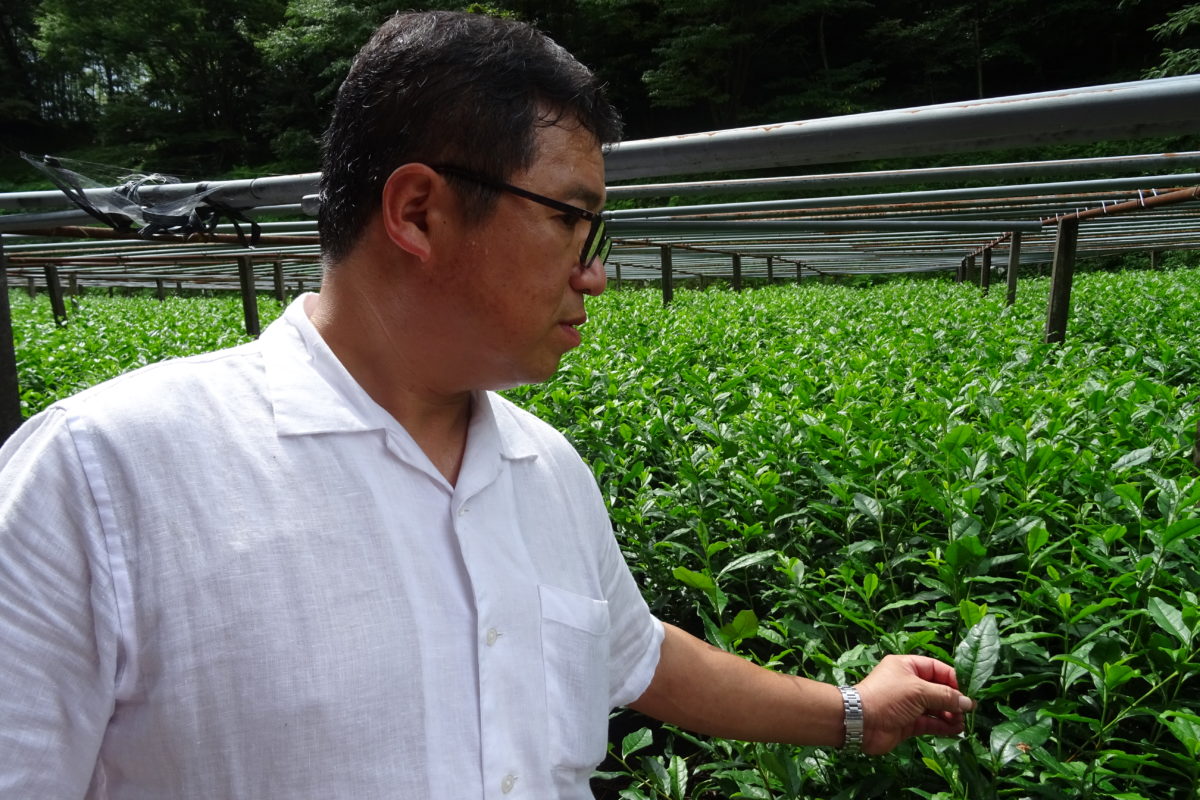
Yasuhiko Kiya is ensuring a future for his family and village by creating innovative tea drinks, dishes, and events and combining those with traditional Japanese tea culture. Tea farmer, seller, event coordinator, gourmet, and nationally certified tea appraiser, Kiya radiates love for his tea-growing neighborhood, Japanese tea, and his son, who will become the fourth generation to run the family business.
To explore his vision, and savor what is arguably the best tea in Japan, I journeyed to Hoshino Village (population 2,600), Yame City, Fukuoka Prefecture.
I was greeted there by Kiya at his elegant Cafe Seisui-an. The café, tasting room, and retail store is a gathering place for tea thinkers and connoisseurs.
But before entering, we toured Hoshino, whose primary industry is tea. Our first stop was the Kiya Horyouen Co. factory. Vibrating machines hummed while grinding, sorting, and packaging tea. Sunbeams illuminated fragrant tea particles floating in midair.
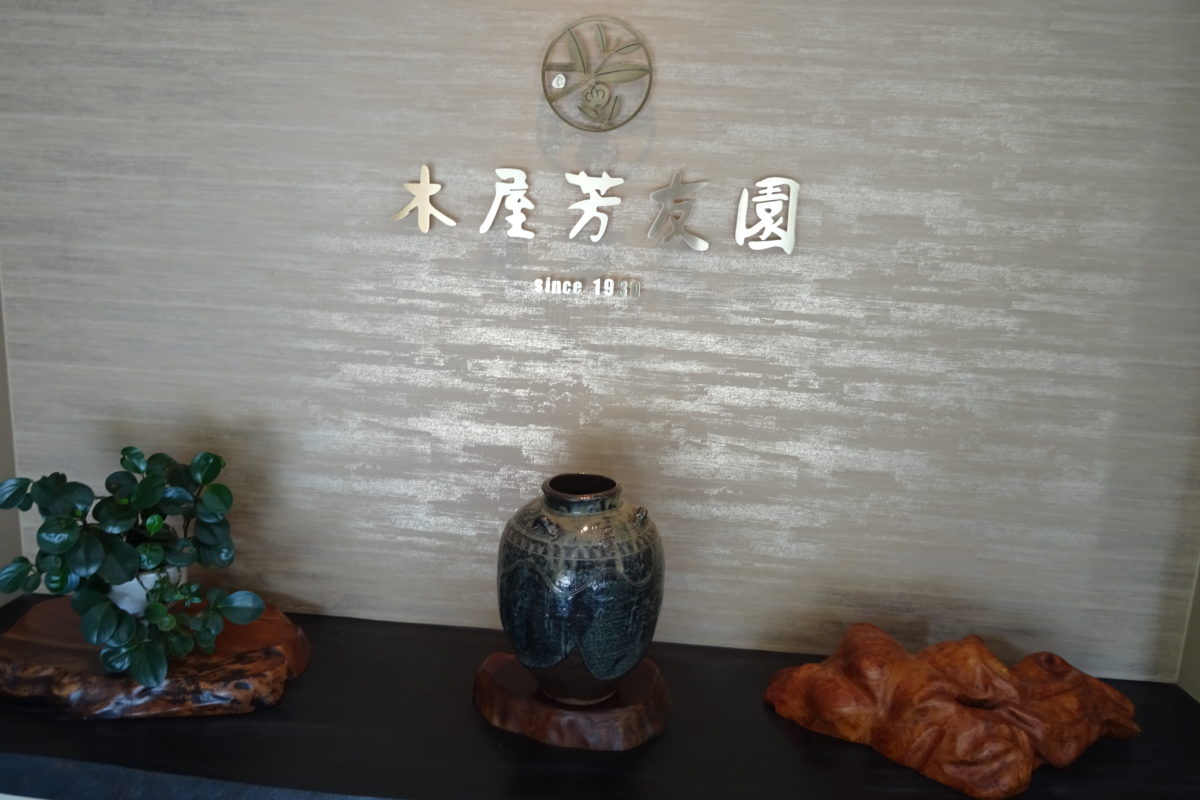
We found his son, Yusuke Kiya, a dozen feet above the floor, adjusting the settings on a rumbling machine that blew tea through pipes across the warehouse. He descended to greet us. With identical smiles and hearty laughter, they seem more like brothers than father and son. The Kiya team produces between 100 and 500 kilograms of premium tea daily.
A short drive up forest roads led to their 40-year-old gyokuro garden. Sunlight shone on vibrant green leaves, and frogs amid the lush tea plants croaked. The soil was dark and spongy. Only one car passed by; the driver was a cousin heading to his tea farm.
“Machines are cheaper, but handpicked leaves make better tea.”
At harvest time, Kiya hires 25 experienced locals to pick leaves. The best workers are in their seventies and eighties. Each plucks around ten kilograms of leaves. Kiya encourages children to participate. He explains, “Passing on the culture involves physically experiencing the culture.” Machines are cheaper, but handpicked leaves make better tea.
Hoshino enjoys a lengthy history of prized teas with many receiving top awards from the Japanese Ministry of Agriculture. Kiya believes the soil quality is one reason why Hoshino produces wins so many championships.
We visited the garden whose tea received first prize in the gyokuro division of the 2018 National Tea Contest. Top chefs and gourmets pay more than $1,000 a kilo for high-end tea. This tea grows on a tiny plateau that overlooks a sparkling river. Knee-high electric fencing encircles majestic tea plants to keep boars out.
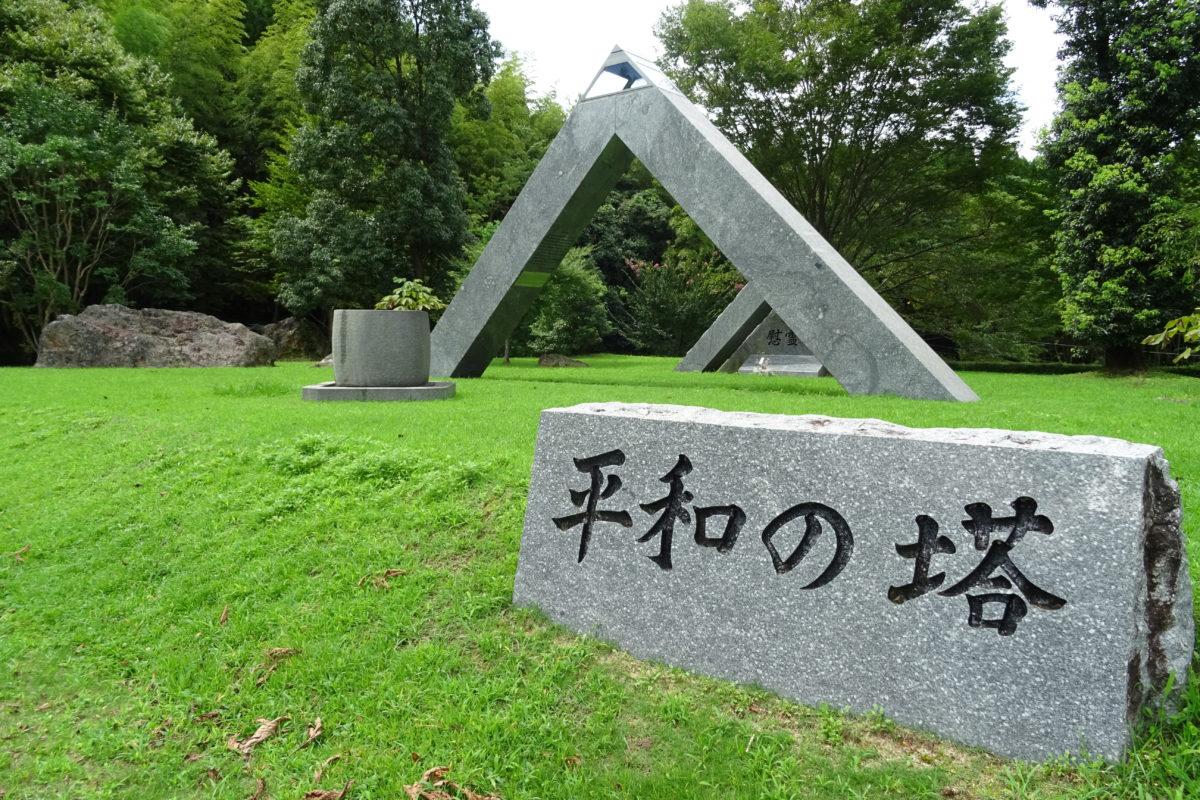
From there, we drove further uphill to a significant location that Kiya wanted Tea Journey readers to know. On August 6, 1945, an atomic bomb that was dropped 200 miles from Hoshino obliterated Hiroshima. Tatsuo Yamamoto, a Hoshino resident, rushed to Hiroshima to find his relatives. They were never seen again. Near their home, Yamamoto discovered smoldering flames and brought the embers to Hoshino. Since then, Hoshino villagers have kept small fires burning within the granite-sculpted Monument for Peace. We prayed for world peace above scattered tea and rice fields.
On returning to Cafe Seisui-an, Kiya explained how he designed and decorated the stylish building, a fusion of Japanese design and modernity, with tea curios, antiques, and precious artworks. We spent hours tasting his teas and listening to Kiya’s ideas for the future of Hoshino tea. His lessons expanded my understanding of tea.
Japan is changing. Consumption of fresh tea is waning in Japan. In its place, cheap bottled tea is growing more popular. Tea culture, including the Japanese tea ceremony, must, he says, find a place in a new era. Experimentation and fusion are integral ingredients for the tea drinks, meals, and events that he hopes will revitalize Japanese tea culture.
Collaboration is crucial. The late French chef Joel Robuchon, honored by Michelin with 31 stars, worked with tea promoters in Yame to pair Hoshino tea varieties with French and Japanese meals. Before he died, Chef Robuchon served Hoshino gyokuro iced tea in shot glasses at his Tokyo restaurant. Kiya is currently searching for another charismatic master chef who shares his passion for great food and tea.
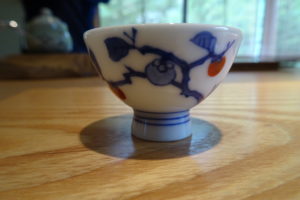
Another collaboration was with award-winning local potter Hekizan Onimaru, who creates stunning wineglass-shaped teacups. Kiya researched drinking vessels to learn which designs enhance the smells and flavors of individual teas. He realized that earthenware teacups modeled after stemless tulip wine glasses intensify the smoky aroma of hojicha.
Kiya prepared tea drinks while explaining his take on Japanese concepts. Omotenashi means expressing sincere respect to guests, which is a significant aspect of Japanese tea ceremonies. He considers the temperature, the seasons, and the conditions of his guests. Each interaction is different. This introduces another essential Japanese tea concept: ichigo-ichie, meaning to treasure every encounter.
If you go…
To reserve a similar tea experience, contact Cafe Seisui-an in advance. The café offers numerous tea drinks and dishes listed on a menu. However, shop clerks are not fluent English speakers. Nonetheless, both Seisui-an and Hoshino Village, especially its tea museum, are worth visiting.
Early on that humid day, Kiya prepared for our interaction by making shincha with water from his well and chilling the tea. In the afternoon, he gracefully served that cold tea in pinot noir glasses. The taste was surprisingly like a Chablis.
We then nibbled on fine-grained Japanese sugar. When I returned to the cold tea, an increase in astringency was evident.
Next, Kiya served us a tablespoon of gyokuro extract in a tiny porcelain teacup. He extracted it from one-year-matured gyokuro. It flowed over my tongue like watery honey, but I tasted intense umami.
Following that, we drank several cups of hot gyokuro tea prepared at various temperatures with different steeping times. Using the same leaves, he produced distinctive flavors. As the umami declined, we stopped to eat tea ceremony sweets made by a local 120-year-old Japanese sweet shop. The sweetness and the astringency equaled harmony.
Afterward, Kiya placed wet tea leaves on tiny plates and sprinkled salt on top. The texture was like boiled spinach. The salt enhanced the remaining umami, and my mouth went to heaven. An earthy hot hojicha brought it back.
The final drink was a strong cold kabusecha that Kiya poured into a wine glass along with Perrier. It was refreshing and palate-cleansing. The most delicious educational experience of my life concluded with the last drop.
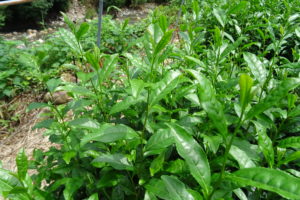
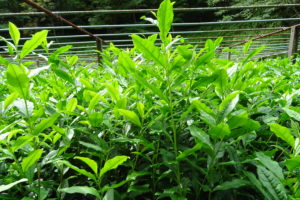
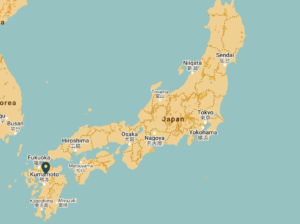
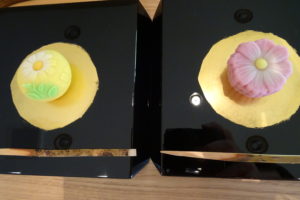
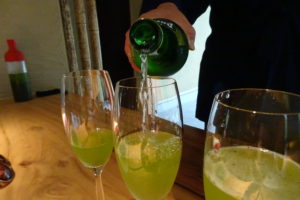
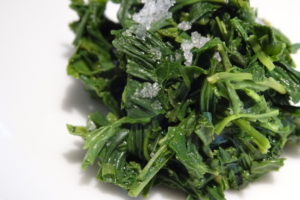
Very educational! thank you!
Thank you for your comment. The world of tea has many rewarding learning experiences for all of us.